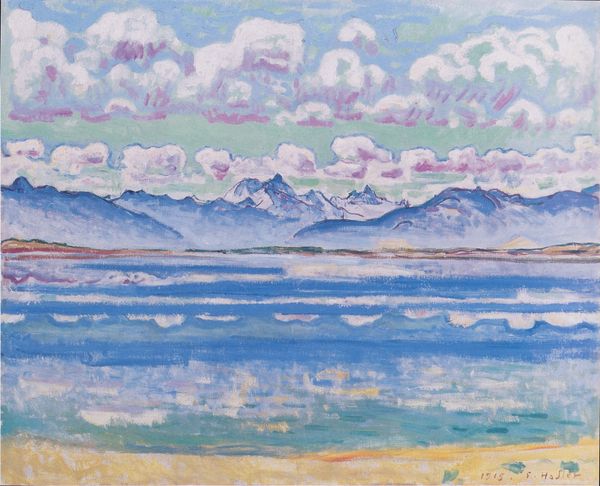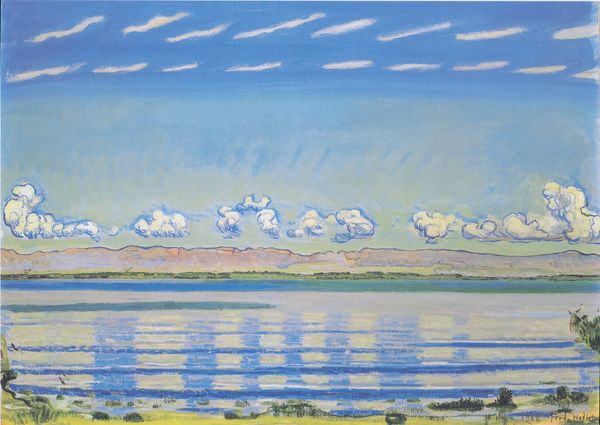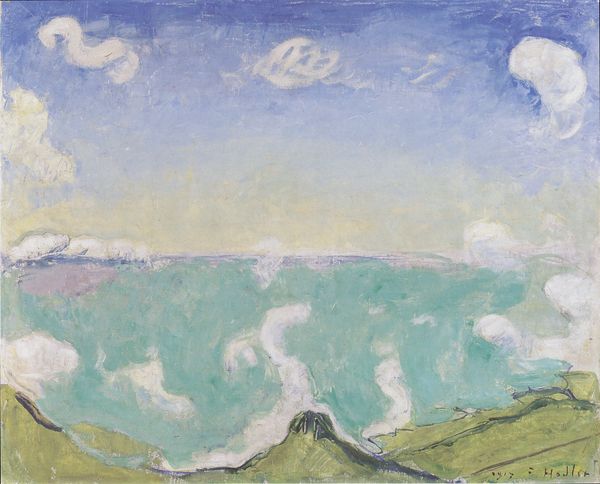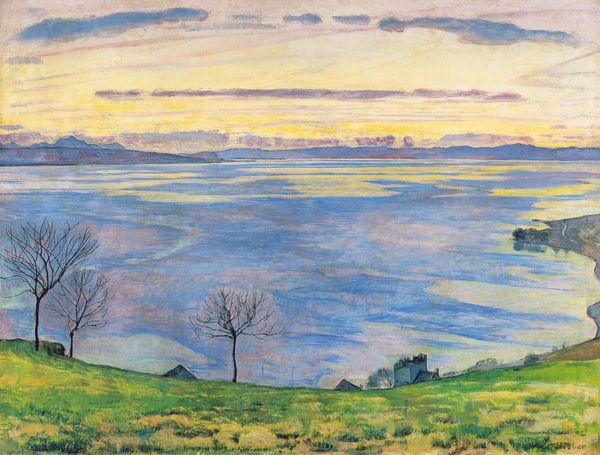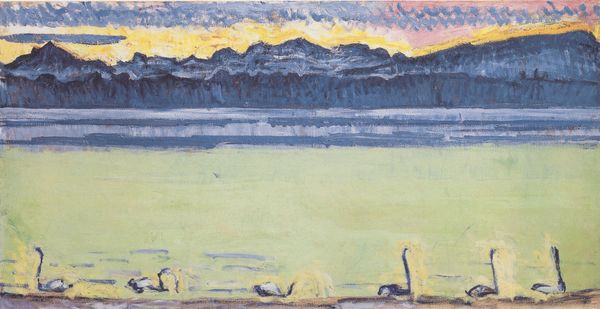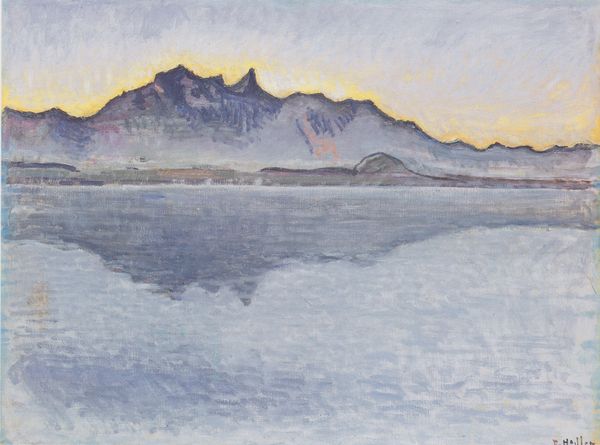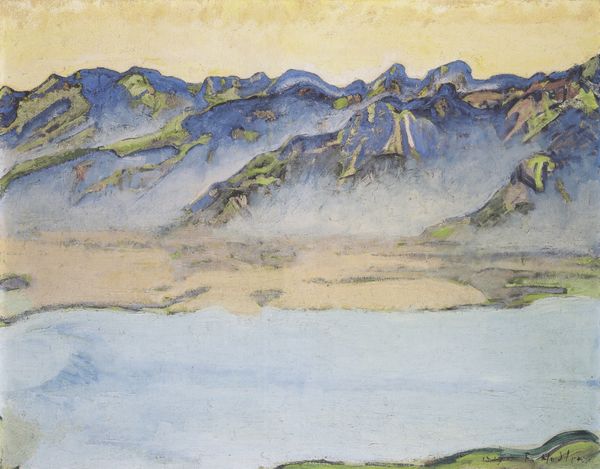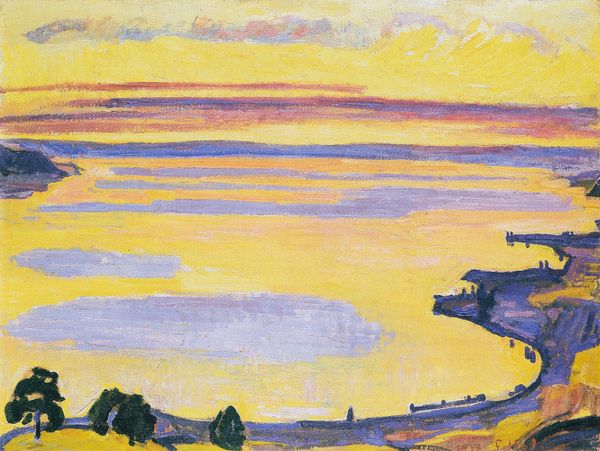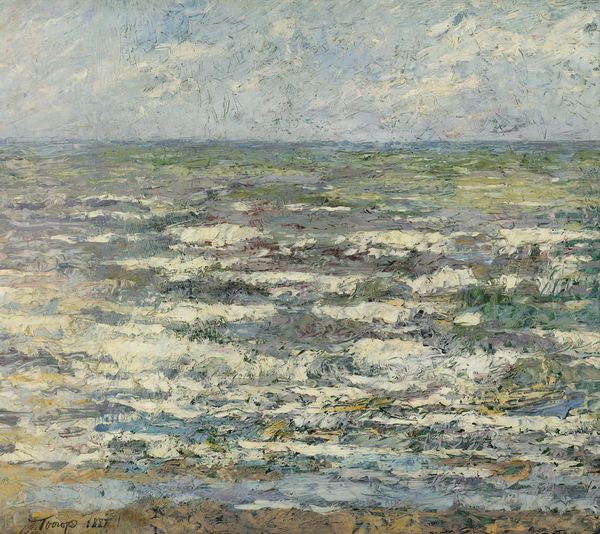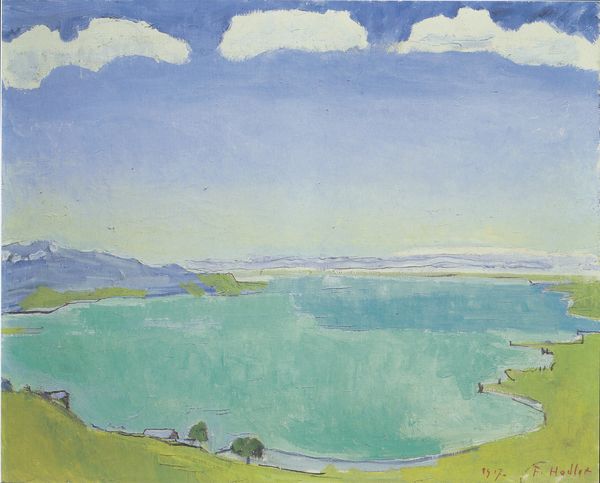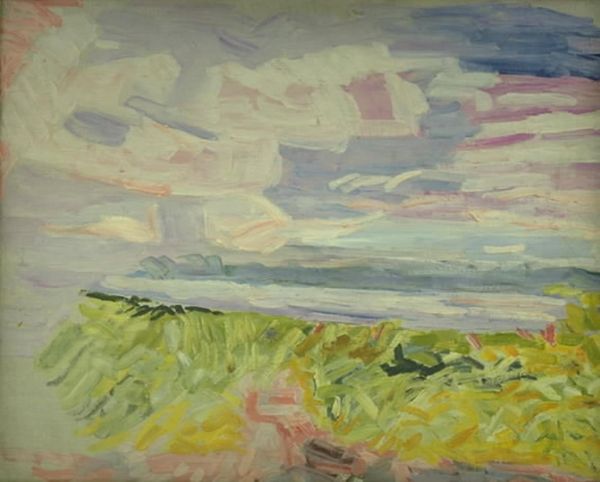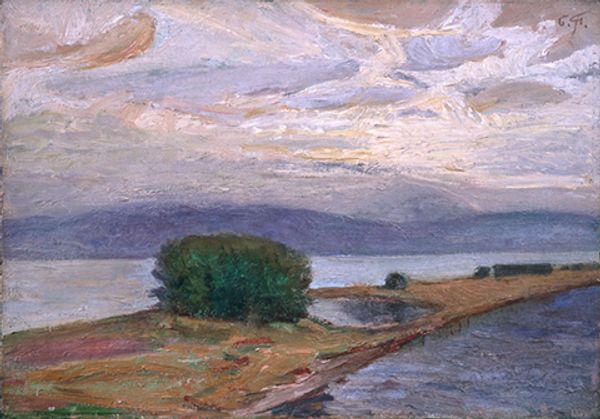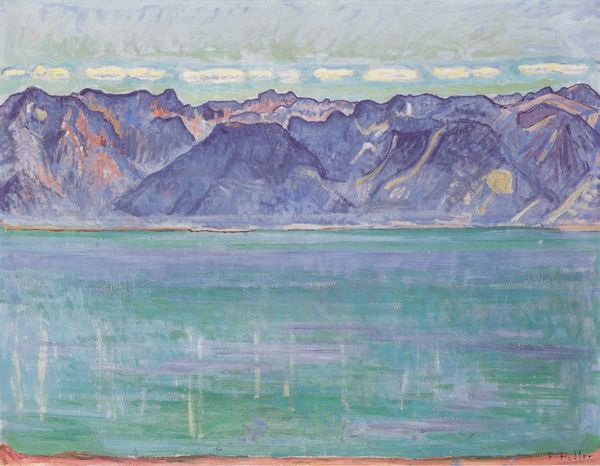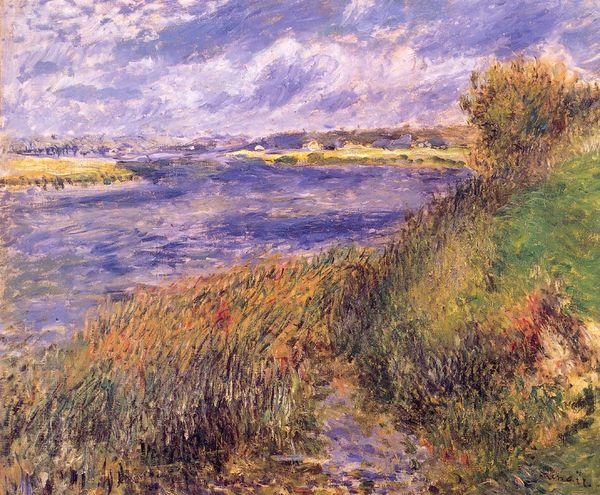
Dimensions: 51 x 72 cm
Copyright: Public domain
Curator: We are looking at Ferdinand Hodler’s "Thun, Stockhornkette, in Clouds" painted in 1912 using oil paint. Editor: It evokes a feeling of serene isolation. The muted blues and greys, the almost indistinct horizon—it feels like a moment caught between the visible and the intangible. Curator: Hodler utilizes a deliberate symmetry here. Note the way the cloud formations mirror the form of the Stockhornkette mountains, creating a harmonious echo. It speaks to his concept of Parallelism, which governed much of his work. Editor: And it's fascinating how that echoes against a backdrop of growing nationalist sentiment in Europe. Landscapes were so often pressed into service to reinforce ideas about homeland. But here, that repetition and formal abstraction serve a very different symbolic function. Curator: Precisely! The composition emphasizes a universal harmony, an almost pantheistic connection between nature’s elements. The brushstrokes themselves, though impressionistic, maintain a sense of order. Look how he layers the paint, creating distinct zones, water, land, sky— Editor: But isn't that ordering itself a kind of statement? Hodler presents an ordered landscape precisely when so many established societal structures were under question. There’s a tension here: between order and the rapidly changing social landscape of early 20th-century Europe, where industrialization, labor struggles, questions of nation and class identity roiled. Curator: While I appreciate the connection to social context, I see it as Hodler grappling with essential, almost transcendental qualities of nature. This wasn’t solely about sociopolitical upheavals. Editor: Perhaps the two aren’t mutually exclusive. This structured approach is less about an immutable truth, but more so about searching for a way to process anxiety during this unsettling time period in our history. Curator: Well, whether he was expressing anxiety or a more elemental understanding of form, it undeniably compels attention. Editor: Absolutely. It’s that ambiguity which makes it so potent. Hodler invites us to consider the connections between nature and culture during a critical moment.
Comments
No comments
Be the first to comment and join the conversation on the ultimate creative platform.
